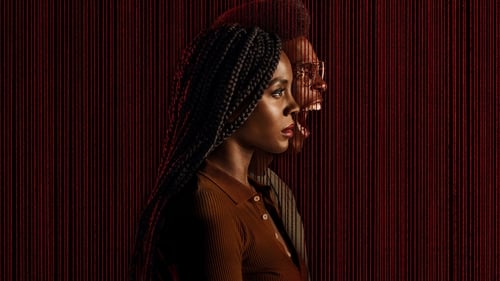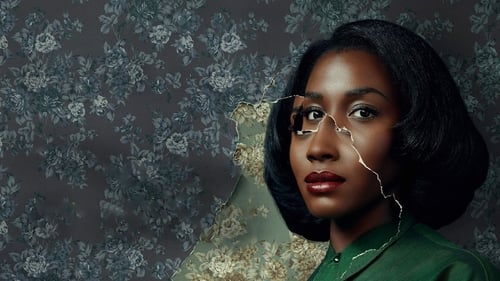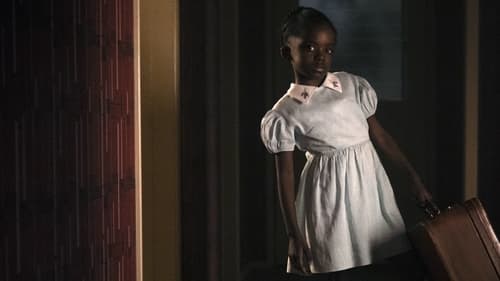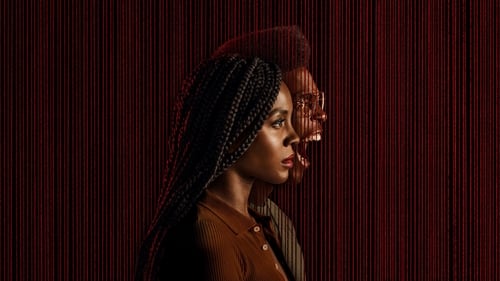
Danybur
7
|
Aug 09, 2021
**_Los riesgos de encarar temas serios desde el cine de género / The risks of tackling serious issues from genre cinema_**
(Español / English)
Sumario
Esta serie de terror se suma a la tendencia de encarar la temática del racismo norteamericano contra los afroamericanos desde el cine de género, encerrando a sus personajes en un asfixiante círculo entre la violencia exterior y sus fantasmas interiores. Una elección que conlleva riesgos que aquí son sorteados sólo parcialmente.
Reseña:
En el marco de la llamada Gran Emigración, un matrimonio de afroamericanos y sus dos hijas, una adolescente y otra más pequeña, emigran a principios de los años 50 de Carolina del Norte a West Compton, un suburbio de Los Ángeles, donde padecerán un creciente hostigamiento por parte de sus vecinos blancos racistas.
Los Emory vienen de un pasado traumático en su anterior morada y seguirán con su karma en este nuevo entorno que debería ser más “tolerante” en función de una reciente normativa legal menos discriminatoria.
¿Por dónde transita el terror en Ellos y su pintura del racismo? Básicamente por dos carriles: uno realista, resultado de la violencia creciente de sus vecinos blancos y otro psiquiátrico/fantástico, ya que los integrantes de la familia conviven con sus respectivos fantasmas. Cada uno de estos fantasmas da cuenta de algunos de los imaginarios racistas de los que son víctimas, y los llevan introyectados, a su pesar. Es muy difícil mantener la cordura en un círculo infernal de hostigamiento externo e interno, real e imaginario y escapar del mismo.
De este modo, la serie intenta una cierta categorización y genealogía histórica del racismo contra los negros mediante el ropaje del terror. La primera parte, semejante al comienzo de la notable Suburbicon de George Clooney, con esos vecinos y esos barrios blancos idílicos de los 50 al que los Emory arriban ilusionados, funciona bien. El comportamiento villanesco de las vecinas (hay algo de misoginia en el planteo de la serie; las más villanas parecen ser las ociosas mujeres), especialmente de Betty (que acarrea sus propios problemas en ese marco de bienestar, a cargo de Alison Pill) y el más “educado” de los jefes de Henry, que es ingeniero (Ashley Bashy Thomas), crean por sí solos una genuina atmósfera de terror. Betty (cuyo personaje sufre un cierto desarrollo algo derivativo) se convierte en la némesis de Livy Emory (Deborah Ayorinde, en gran papel) y su familia, liderando unos de los pactos o convenios a los que alude covenant, el título inglés de la temporada, por otro lado cercano a coven (aquelarre).
Se suman al costado realista interesantes observaciones sobre la especulación inmobiliaria y crediticio detrás de la promoción de la incorporación de afroamericanos a algunos barrios blancos, originalmente prohibida por ley (otro de los convenios del título), sobre el desempeño del sistema de salud y sobre el cristianismo.
En cuanto a los fantasmas, si bien en muchos casos movilizan la conducta de los protagonistas con un fatalismo que constituye uno de los mensajes de la serie, el recurso termina tornándose repetitivo, más allá de sus variados efectos.
Narrativamente, Ellos transcurre alternando dos líneas temporales, correspondientes a las etapas de Carolina del Norte y de West Compton. Luego se agrega, con un interesante recurso formal, una tercera época. La reconstrucción y ambientación de todas ellas es notable.
Transitar repetidamente la violencia verbal racista de los bancos y ciertos episodios de violencia física contra los protagonistas hace que la serie se acerque al incómodo límite del regodeo, llevando por momentos su tono al tremendismo de Ryan Murphy y su American Horror Story, pero naturalmente sin su humor. Son algunos de los riesgos de encarar temas muy serios y delicados desde el cine de género.
Por último, cabe señalar que el título en inglés de la serie es Them, que no significa ellos sino a ellos o les/los/las, moviendo gramaticalmente a sus protagonistas del lugar de sujeto al de un Otro objeto.
Summary
This horror series joins the trend of addressing the issue of American racism against African Americans from the genre cinema, locking its characters in a suffocating circle between external violence and their internal ghosts. A choice that carries risks that are only partially avoided here.
Review:
In the framework of the so-called Great Emigration, an African-American couple and their two daughters, one adolescent and the other younger, emigrate in the early 1950s from North Carolina to West Compton, a suburb of Los Angeles, where they will suffer a growing harassment by his racist white neighbors.
The Emory come from a traumatic past in their previous home and will continue with their karma in this new environment that should be more “tolerant” based on recent less discriminatory legal regulations.
Where does terror travel in Them and their painting of racism? Basically on two lanes: a realistic one, that results of the growing violence of their white neighbors and the other psychiatric / fantastic, since the members of the family live with their respective ghosts. Each of these ghosts accounts for some of the racist imaginaries of which they are victims, and they carry them introjected, despite themselves. It is very difficult to keep your sanity in a hellish circle of external and internal harassment, real and imaginary and to escape from it.
In this way, the series attempts a certain categorization and historical genealogy of racism against blacks through the clothing of terror. The first part, similar to the beginning of George Clooney's remarkable Suburbicon, with those neighbors and those idyllic white neighborhoods of the 50s to which the Emorys arrive excited, works well. The villainous behavior of the neighbors (there is some misogyny in the series' approach; the most villainous seem to be the idle women), especially Betty (who brings her own problems in that well-being framework, in charge of Alison Pill) and the most "educated" of Henry's bosses, who is an engineer (Ashley Bashy Thomas), create by themselves a genuine atmosphere of terror. Betty (whose character undergoes a certain somewhat derivative development) becomes the nemesis of Livy Emory (Deborah Ayorinde, in great role) and her family, leading one of the covenants referred to in the season's title.
Added to the realistic side are interesting observations about the real estate and credit speculation behind the promotion of the incorporation of African Americans into some white neighborhoods, originally prohibited by law (another of the title covenants), about the performance of the health system and about the Christianity.
As for the ghosts, although in many cases they mobilize the behavior of the protagonists with a fatalism that constitutes one of the messages of the series, the resource ends up becoming repetitive, beyond its various effects.
Narratively, They passes by alternating two timelines, corresponding to the North Carolina and West Compton stages. Then a third period is added, with an interesting formal device. The reconstruction and setting of all of them is remarkable.
Repeatedly going through the racist verbal violence of the banks and certain episodes of physical violence against the protagonists brings the series closer to the uncomfortable limit of gloating, taking its tone at times to the tremendousness of Ryan Murphy and his American Horror Story, but naturally without his humor. These are some of the risks of tackling very serious and delicate issues from genre cinema.











